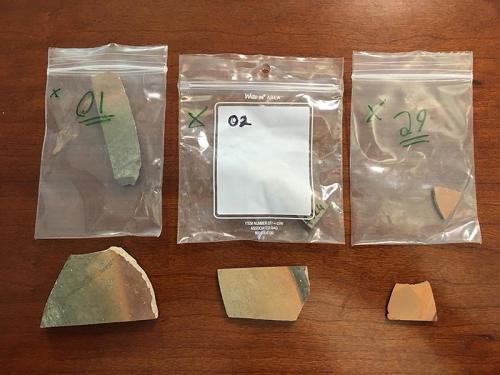
Y-PYRO Director Ellery Frahm has a newly published article in Journal of Archaeological Science on pXRF of experimental and ancient Syrian ceramics, revealing chemical differences between imports and their local imitations. The article is freely available to read or download for the next 50 days via the following link: https://goo.gl/LCnWbq (works best with Firefox or Chrome).
Title: Ceramic studies using portable XRF: From experimental tempered ceramics to imports and imitations at Tell Mozan, Syria
Abstract: Studies of Northern Mesopotamian complex societies have long been predicated on ceramic wares, whereby ceramic variation is thought to reflect cultural variation. There is, however, an increasing appreciation for the role of imitation, itinerancy, and other phenomena in the distribution of ceramic styles. Much of this newfound nuance is due to chemical studies. Increasingly ceramics have been studied using portable X-ray fluorescence (pXRF). The utility of pXRF in ceramic research relies on being able to interpret the data in behaviorally meaningful ways. Thus, one approach to considering the efficacy of pXRF for ceramic studies proceeds from understanding the ways in which clays and tempers act as variables and influence the data in ways that reflect past behaviors. First, this study uses experimental replicas to exert systematic control over individual parameters (e.g., temper size, volume), allowing a better understanding of their influence. Second, this study considers Bronze Age wares at Tell Mozan in northeastern Syria. The experimental ceramics and Tell Mozan sherds are technological products that retain chemical evidence of choices made during their production. In the experimental ceramic set, a predicted phenomenon (e.g., the “dilution” effect from temper) occurred as expected, and elemental data differentiated clays and tempers selected for their manufacture. In the archaeological assemblage, elemental approaches established that distinctions between imports and locally made imitations are not always apparent by conventional means, and the use of pXRF is one way to overcome current shortcomings as well as contribute new insights.